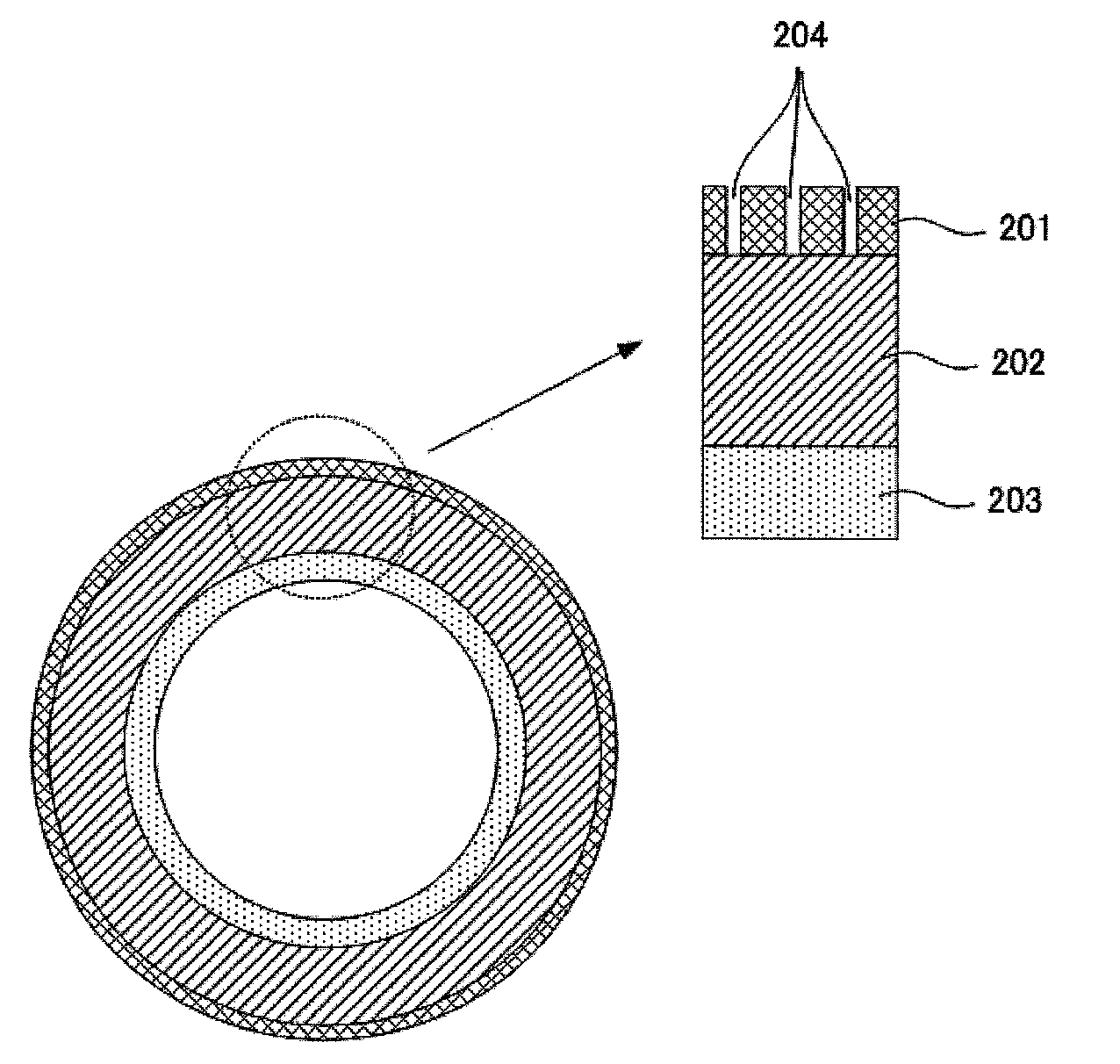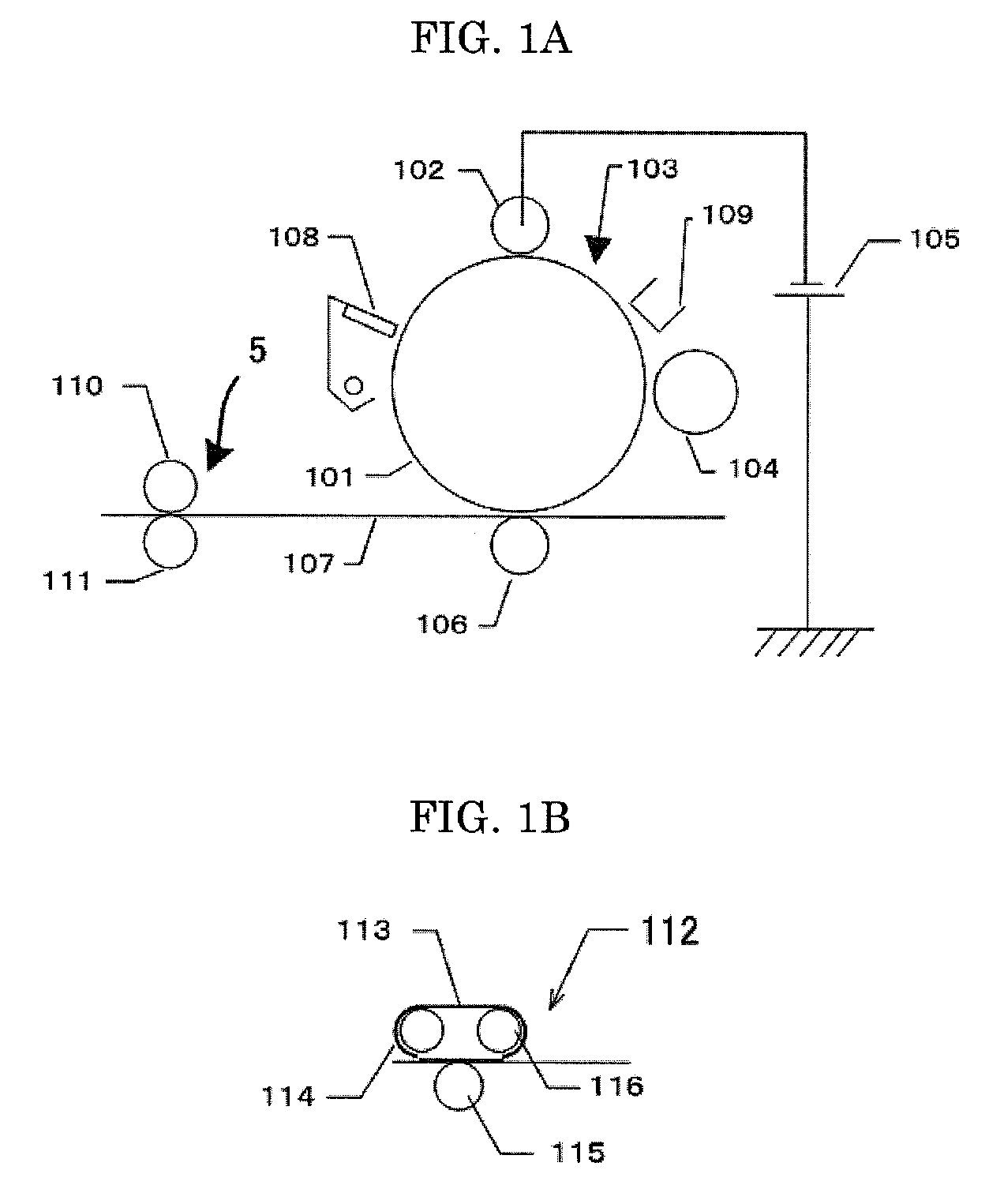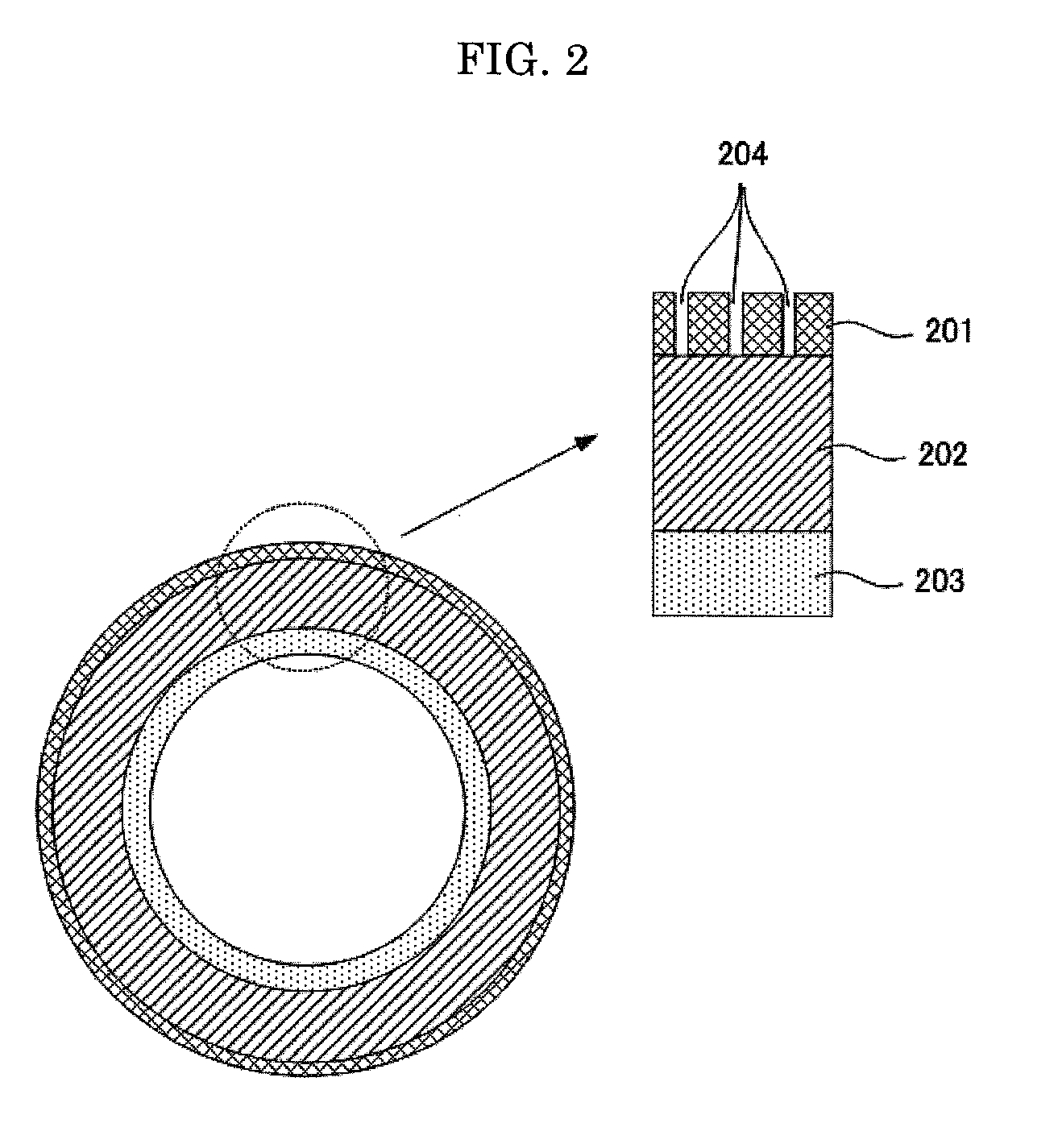Fixing member, method for producing the same, and fixing device
a technology of fixing parts and fixing parts, which is applied in the direction of electrographic process equipment, instruments, optics, etc., can solve the problems of reducing the cohesive force of the overall toner, roller filming and/or a carrier-spent phenomenon, and high probability of exposure of wax, etc., and achieves high gloss and withou. , the effect of increasing the roughness of the image surfa
- Summary
- Abstract
- Description
- Claims
- Application Information
AI Technical Summary
Benefits of technology
Problems solved by technology
Method used
Image
Examples
example 1
[0133]A silicone primer layer as an underlayer was formed and dried on a cylindrical base material (made of a polyimide resin) having a length of 320 mm, a diameter of 60 mm and a thickness of 50 μm, then fluorosilicone rubber (X36-420U, manufactured by Shin-Etsu Chemical Co., Ltd.) was applied onto the silicone primer layer by blade coating, which was followed by heating at 150° C. for 10 minutes, and an elastic layer having a thickness of 200 μm was thus formed.
[0134]Next, 10 g of PFA particles (powdered fluorine resin, MP102, manufactured by DU PONT-MITSUI FLUOROCHEMICALS COMPANY, LTD.) classified so as to have diameters of 0.1 μm to 50 μm (mainly 10 μm) were attached onto the elastic layer by powder coating.
[0135]Subsequently, a fluorine-based elastomer (SIFEL615C, manufactured by Shin-Etsu Chemical Co., Ltd.) was applied over the PFA particle layer, which was followed by heating at 150° C. for 60 minutes, and a release layer having a thickness of 5.0 μm was thus formed.
[0136]Ne...
example 2
[0146]A fixing member of Example 2 was produced in the same manner as in Example 1, except that, instead of the fluorosilicone rubber in the elastic layer, silicone rubber (DY35-2083, manufactured by Dow Corning Toray Co., Ltd.) was applied by blade coating so as to have a thickness of 200 μm, which was followed by heating at 150° C. for 30 minutes and then secondary vulcanization at 200° C. for 4 hours.
[0147]Regarding the obtained fixing member of Example 2, the universal hardness of the release layer was 0.8 N / mm2 (when the indenter had been pushed to a depth of 5 μm), and the universal hardness of the elastic layer was 0.4 N / mm2 (when the indenter had been pushed to a depth of 5 μm).
[0148]Also regarding the obtained fixing member of Example 2, the receding contact angle of the surface of the release layer to purified water was 91°, and the receding contact angle of the surface of the elastic layer to purified water was 76°. When the quartz plate was brought into contact with the ...
example 3
[0149]A fixing member of Example 3 was produced in the same manner as in Example 1, except that, instead of the fluorine-based elastomer in the release layer, a fluorine-based carbon compound (OPTOOL HD, manufactured by DAIKIN INDUSTRIES, LTD, diluted solution (1.0% by mass)) was only applied by dipping and kept at a relative humidity of 90% and a temperature of 80° C. for 30 minutes, which was followed by drying at 150° C. for 10 minutes, and a release layer having a thickness of 0.02 μm was thus formed.
[0150]Regarding the obtained fixing member of Example 3, the universal hardness of the release layer was 0.2 N / mm2 (when the indenter had been pushed to a depth of 5 μm), and the universal hardness of the elastic layer was 0.2 N / mm2 (when the indenter had been pushed to a depth of 5 μm).
[0151]Also regarding the obtained fixing member of Example 3, the receding contact angle of the surface of the release layer to purified water was 90°, and the receding contact angle of the surface o...
PUM
 Login to View More
Login to View More Abstract
Description
Claims
Application Information
 Login to View More
Login to View More - Generate Ideas
- Intellectual Property
- Life Sciences
- Materials
- Tech Scout
- Unparalleled Data Quality
- Higher Quality Content
- 60% Fewer Hallucinations
Browse by: Latest US Patents, China's latest patents, Technical Efficacy Thesaurus, Application Domain, Technology Topic, Popular Technical Reports.
© 2025 PatSnap. All rights reserved.Legal|Privacy policy|Modern Slavery Act Transparency Statement|Sitemap|About US| Contact US: help@patsnap.com



